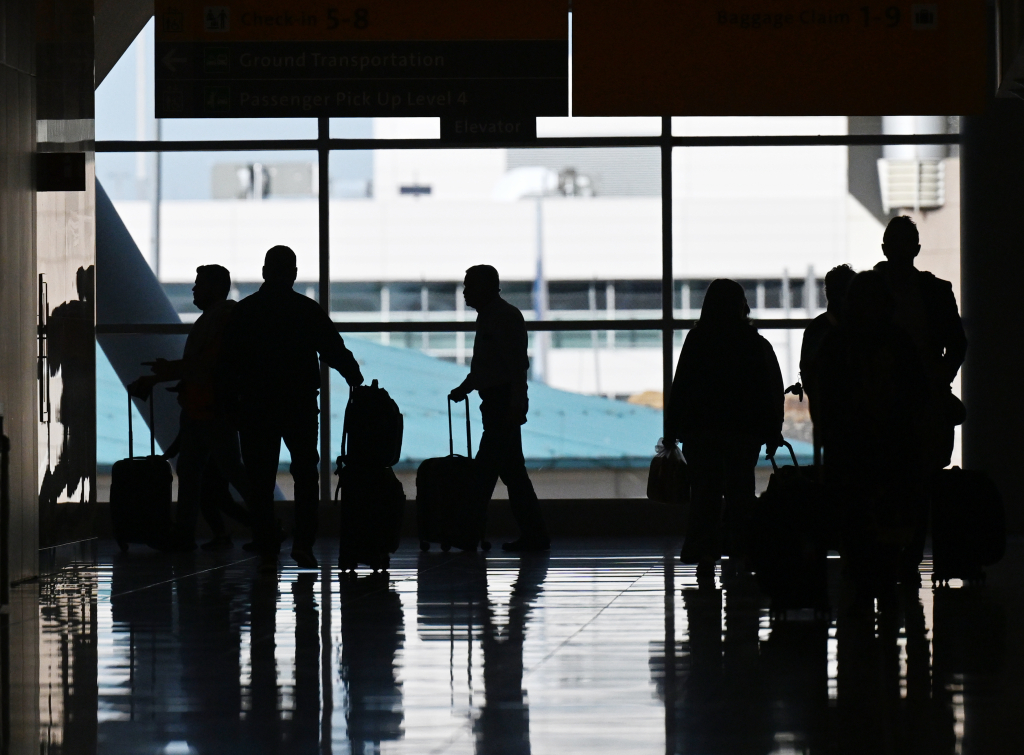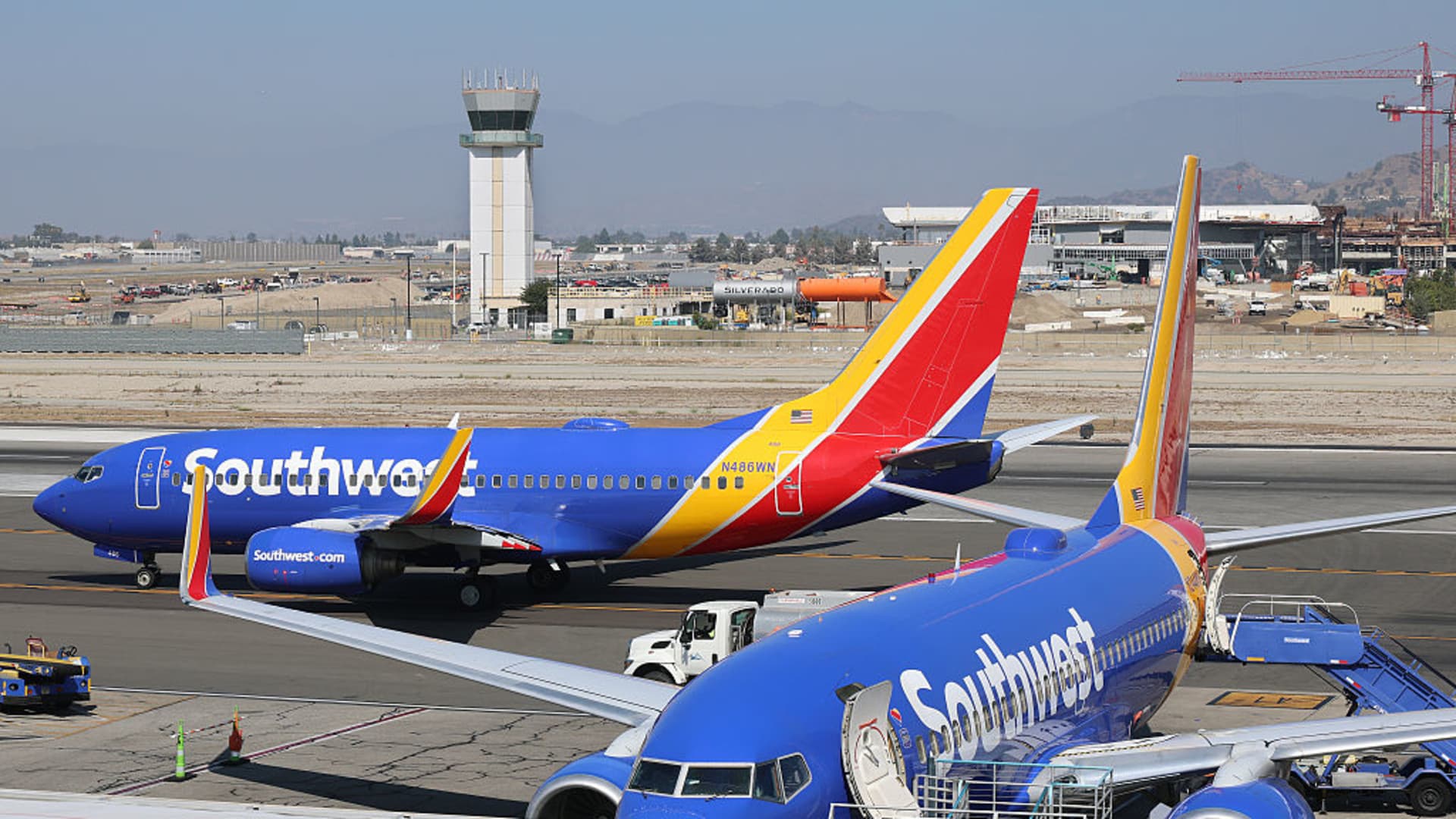Copyright The Denver Post

Inside a tower at Denver International Airport, federal air traffic controllers have kept air travel alive through the government shutdown, even as the Trump administration on Thursday ordered a reduction in flights at 40 major airports, including DIA, forcing airlines into a scramble and complicating the lives of travelers nationwide. Nearly 700 planned Friday flights were cut from airline schedules — including more than 70 in and out of Denver, according to FlightAware, a website that tracks flight disruptions. That number, already four times higher than Thursday’s daily total, was likely to keep climbing. The 31 controllers assigned to DIA’s tower received notices Thursday saying their pay next week, again, would be zero. Federal Aviation Administration officials didn’t respond to DIA’s request for permission to use local airport revenues to cover wages for the controllers. The Denver tower controllers are at 75% of FAA target capacity, according to the National Air Traffic Controllers Association, the union that represents them. While they’re accustomed to working extra hours due to shortages, and trained to leave distractions at the door as they begin their shifts directing aircraft, working without pay has ratcheted pressure to unprecedented levels, said Steph Winder, an NATCA vice president who also works as a controller in the Rocky Mountain west. “You’re checking in on everybody all the time, to make sure they’re OK,” and the pressure “presents itself as people getting really short and angry a lot more quickly than normal,” Winder said in an interview. “It is just so stressful. If you screw up, it could mean someone loses their life, their spouse, or their child. You don’t want to be that person who’s pointed to. So you work very hard.” Federal air traffic controllers working without pay during the shutdown, which began Oct. 1, stayed at the eye of the national air-travel turbulence that on Thursday led airport officials from New York to Los Angeles to brace for a storm in the weeks leading into the peak Thanksgiving travel period. U.S. Transportation Secretary Sean Duffy and FAA officials have ordered 10% flight reductions — citing a need to ensure airspace safety as the shutdown hammers controllers — and on Thursday issued a list of the 40 airports, raising the prospect that thousands of flights could be cut over the next week. In addition to Denver, that list includes hubs such as Atlanta, Dallas, Chicago, New York City, Los Angeles and Charlotte, North Carolina FAA officials directed phased cuts, starting with 4% reductions by Sunday, then, subject to further orders, an increase in cuts by 1% of flights each day up to 10% — unless the federal government shutdown ends, airline company officials told The Denver Post. The cuts ultimately could affect as many as 1,800 flights, or upward of 268,000 passengers, per day, according to an estimate from Cirium. Denver Mayor Mike Johnston lashed out at the Trump administration Thursday evening. “President Trump’s shutdown has forced federal employees to work without pay and left 100,000 Denverites without access to food,” he said in a statement. “Now his dysfunction is threatening to cancel flights for millions of Americans and kneecap our state’s largest economic engine. … I urge the Trump administration to stop playing politics, lift these restrictions, and keep our flights running smoothly, safely and at full strength.” Airlines cut flights, issue waivers At DIA, United Airlines, the major carrier, began making cuts, canceling about 20 round-trip flights in and out of the airport each day through Sunday. Southwest, Frontier and American airlines officials — some of them bristling at leaders in Washington, D.C. — said they were planning cuts and would issue waivers and allow travelers to re-book flights at no cost. Airlines officials said they would communicate with customers affected by cuts via email, text messages and their smartphone apps. For United, about 55 flights would be cut daily if Trump administration officials push their order up to 10% — dependent on the jockeying between Republicans and Democrats in Congress over ending the shutdown. United officials said they’ll focus the cuts on smaller regional routes that use smaller planes like 737s. “The FAA’s goal is to relieve pressure on the aviation system so that we can all continue to operate safely. That is the FAA’s highest priority, and ours as well,” United chief executive Scott Kirby said in a statement to employees. “No matter what environment we’re operating in, we will not compromise on safety.” United’s “hub-to-hub and international flights won’t be cut,” airline spokesman Russell Carlton said. “That’ll help us maintain our operation and give impacted customers as many options as possible to resume their trip.” American Airlines officials sent a statement Thursday afternoon confirming that, in line with the FAA order, “we have reduced flight schedules by 4% at 40 airports Friday through Monday, amounting to about 220 flights (nationwide) canceled each day.” The bulk of airlines’ flights will continue as scheduled. American will still be running around 6,000 daily flights, the company statement said. “Disrupting customers’ plans is the last thing we want to do… We’re deeply grateful to federal aviation workers who continue working without pay to keep our skies safe,” the airline said. “This is unacceptable. We, once again, urge leaders in Washington to reach an immediate resolution to end the shutdown.” Southwest Airlines officials were “determining the scheduling adjustments needed to meet the required FAA flight reductions,” spokeswoman Lynn Lunsford said. “We will communicate directly with affected customers as soon as possible. “We continue to urge Congress to immediately resolve its impasse and restore the national airspace system to its full capacity.” No response from FAA on pay DIA officials declined to discuss the impact of the flight reductions on airport operations, referring queries to the FAA, and were unable to address questions about the safety implications of air traffic controllers working at 75% of their staffing target, and possible airport adjustments this weekend. The airport ranks among the busiest in the world, a centrally located hub handling more than 82 million passengers a year. “We have not yet received a response from the FAA regarding our request for a waiver,” DIA communications director Courtney Law said. FAA communications officials didn’t respond to questions from The Post. DIA chief executive Phil Washington declared Wednesday evening that DIA would seek FAA permission to use local airport revenues to pay federal air traffic controllers. DIA would request reimbursement from the federal government after the shutdown ends. Beyond the air traffic controllers, Washington said, “We would love to be able to do more and provide wage support for all the federal workers” at the airport, “but given the number of federal employees, we are only able to support controllers at this time.” Meanwhile, donated items were arriving at a newly-launched DIA “food and essentials pantry” to help support the 1,800 federal employees and their families. “The response from the airport community has been tremendous. We have collected a large number of items for the pantry as well as a couple of thousand dollars in just the first couple of days,” Law said. During the shutdown, DIA had seen relatively few flight delays and cancellations, compared with other airports where controller staffing shortages were linked to disruptions. DIA saw 295 flight delays and four cancellations on Thursday, according to the FightAware tracking system. For the air traffic controllers at work, deliveries of food and coffee from flight attendants and a pilot association boosted morale this week. Some controllers have quit in recent weeks, and some in the FAA’s four-year training program have reconsidered their career choice. But those who have remained at work in airport control towers are deeply committed, NATCA vice president Winder said. “There’s no other job like it. I cannot think of anything else I could do that would bring me so much joy,” she said, describing controllers’ plight through weeks without pay as working for the love of a job that helps people. “That’s exactly what we are doing.” The Associated Press contributed to this report.



